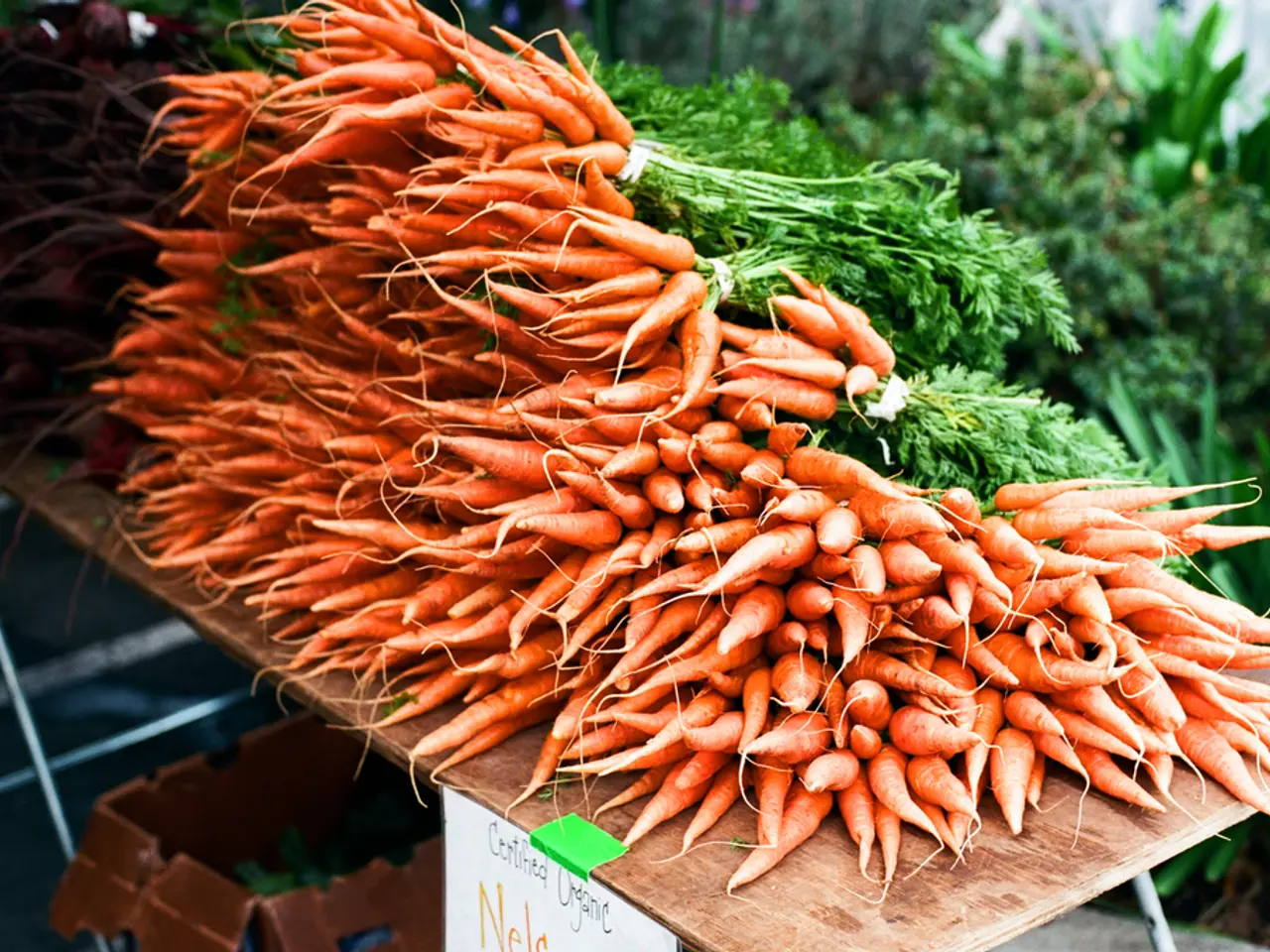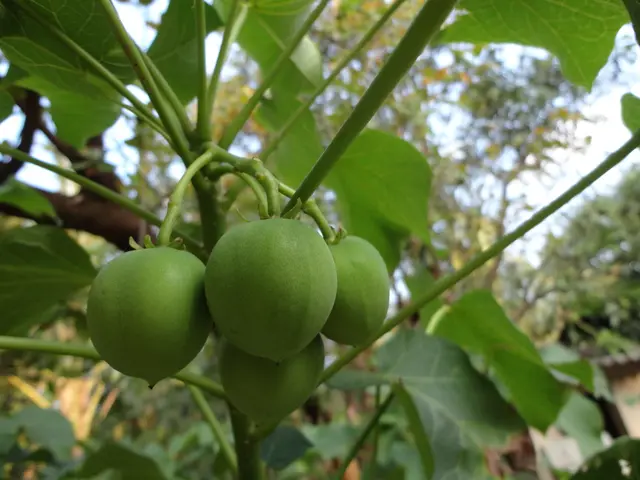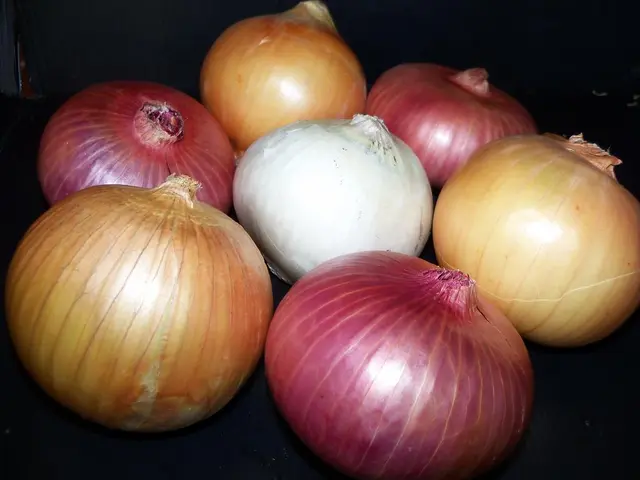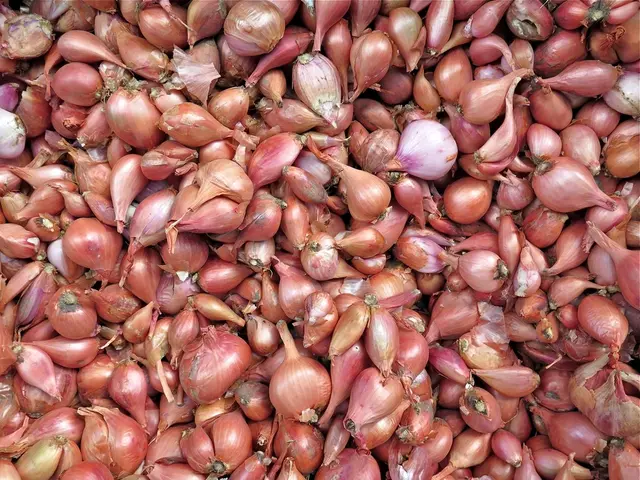Ideal Sowing Time for Carrots in Zone 6: Discovering the Right Moment for a Prosperous Crop Yield
Garden Master Glen's Carrot Chronicle
The Modern Gardener's Guide
Hi, Plant Enthusiasts!Glen's back with some carrot know-how for Zone 6 gardeners! Get ready to grow vibrant orange roots that'll add zest to your plate and joy to your garden.
- Garden Guru GlenA gardening maestro with 15 years of expertise under his belt, Glen dishes out valuable insights on garden maintenance, design, and landscaping services. When he's not entrancing the gardening world via this blog, he turns his green thumb to magnificent carrot cultivation in Zone 6! Latest articles by our horticultural hero (stroll through them all)
- Slaying Garden Diseases: Keeping Your Plants Healthy as a Whistle - June 9, 2025
- How to Pick Candy Cane Peppers Like a Pro: The Ultimate Guide - June 9, 2025
- Watermelon Wonders: When to Pick 'Em and Share 'Em - June 9, 2025
Quick Carrot AnalysisAs a general rule, plant carrot seeds around April 1st, as it's about two to three weeks before the last frost date in Zone 6. But pay heed, for timing isn't everything! Carrots adore cooler temperatures—too early might lead to frost damage, too late, and you might miss the prime growing season.
A Taste of Tip-Top GrowthGlen's all about making gardening enjoyable and simple. The secret to growing luscious carrots in Zone 6 relies on three factors: selecting the ideal planting time, preparing the soil for success, and picking the perfect seeds.
Creating a Prime Planting Time
Zone 6's last frost date usually falls around April 21st. Glen believes carrot seeds should be sown 2-3 weeks before this date, generally somewhere between April 1st and April 10th. Planting in the early spring keeps carrots away from the summer heat, which can make them bitter. In winter, Glen starts late-summer sowing around mid-August to early September to make sure his carrots mature before the first hard frost.
Soil That Shines
Well-drained, sandy soil is key; it allows carrots to grow without hindrance.
- Debris Dancing: Shoo away rocks, sticks, and other debris.
- Go Deep: Ensure the soil is 12 inches deep, offering enough room for root growth.
- Compost Craze: Mixing organic compost will improve soil texture and provide nutrients.
- Acidic Affection: Aim for a soil pH between 6.0 and 6.8—slightly acidic for happy carrots!
Seeds with Success
The variety of carrots affects the harvest, so choose the perfect match for your garden.
- Danvers: Perfect for heavy soil with deep orange roots.
- Imperator: Long, slender, and widely popular.
- Bolero: Disease resistance and great for winter storage.
- Little Finger: Ideal for containers and quick growth.
- Nantes: Sweet, cylindrical, and great for fresh eating.
Planting Pearls
- Spacing: Plant seeds about 1/4 inch deep, spaced 2-3 inches apart.
- Moisture Mojo: Keep the soil consistently moist but not overwatered.
- Thin and Trim: Thin seedlings to 1-2 inches apart once they reach 2 inches in height.
Plant, Water, and Watch!These simple steps ensure a healthy start, maximizing chances for a bountiful carrot crop.
Overcoming Garden Challenges
Growing carrots in Zone 6 isn't all sunshine and roses. Understanding weather extremes, pests and diseases, and proper harvesting techniques is essential for a thriving harvest.
Staying Ahead of Adverse Weather
Zone 6's unpredictable climate calls for protection during weather extremes.
Temperature PreferencesCarrots crave cooler temperatures, thriving between 55°F and 75°F.
To shield young plants from frost, consider row covers. They help moderate temperature dips and protect from light frost. Mulch can keep soil cool during hot weather, while consistent watering keeps carrots hydrated.
Fighting Foes with Pestilence and Disease
Carrots face various pests and diseases, so keeping an eye out is crucial.
Quick WarningCarrot root flies and aphids are common pests to watch out for.
To deter carrot flies, position carrots beside onions or leeks, as their strong scents confuse these pests. Regularly inspect plants for signs of disease, removing promptly any affected plants to prevent the spread. Practice crop rotation by avoiding planting carrots in the same soil where carrots or similar vegetables were grown the previous year.
Perfecting the Art of Harvesting
Proper carrot harvesting ensures sweet, nutritious roots.
Harvest HintsHarvest carrots when they reach 1/2 to 1 inch in diameter.
Be patient and wait until the tops above the soil. When it's time, gently pull the carrots without damaging the roots. Watering the soil before harvesting softens the ground if it's dry.
Stagger your planting times for extended harvests. Directly sow seeds every few weeks from early spring to late summer.
Zestful Growth!
By following these tips, you'll grow a flourishing and robust carrot crop, ready to add vibrant color and flavor to your dishes! Happy gardening!
Footnotes:
[1] Link (Optional Tip)[2] Link (Optional Tip)[3] Link (Optional Tip)
Jump to Topic (hide)
- Cultivating Your Garden: Planting and Growth
- Carrot Planting Time
- Preparing the Soil for Growth
- Choosing Seeds for Success
- Conquering Garden Challenges
- Protecting Plants from Weather Extremes
- Combating Pests and Diseases
- Harvest Techniques and Timing
- Carrot Recipes (Optional Content)
- Carrot Soup
- Carrot Salad
- Carrot Cake
And that's all, folks! Now you have the knowledge and tools to grow delicious, homegrown carrots in Zone 6 like a pro. Happy planting, and remember to follow Glen's expert advice for a bountiful garden harvest!
- Glen's expertise extends beyond carrot cultivation; he offers valuable insights on home-and-garden topics such as garden design, landscaping services, and general gardening advice.
- By following Glen's tips on planting carrot seeds at the right time, preparing the soil properly, and selecting the right seeds, you can grow a luscious carrot garden that adds both vibrant color to your home-and-garden and zest to your lifestyle.








